Do you know which cognitive function allows us to interpret other people’s emotions? Can you recognize which function is responsible for our ability to understand what others think in certain situations? Or, could you identify why we behave in a socially appropriate way in certain circumstances? We do all of this thanks to social cognition, and today we present several exercises to stimulate it.
Definition
Social cognition is the set of cognitive processes and emotional processes through which we interpret, analyze, remember, and use information about the social world.
It refers to how we think about ourselves, about others and their behavior, and about social relationships. It also refers to how we make sense of all that information and produce behaviors based on it.
Social cognition and emotions
Social cognition allows us to interpret our own and other people’s emotions. Ultimately it enables us to understand other people. That is, it involves putting yourself in others’ shoes and taking their point of view into account.
And can this cognitive function be trained? Yes. Social cognition, like all cognitive functions, can be trained through cognitive stimulation.
Social cognition exercises
1. Emotion recognition
In this exercise the user has to try to recognize the emotions shown and match them with the terms that define them. In the example the user must identify whether the woman in the image shows admiration, calm, or relief.
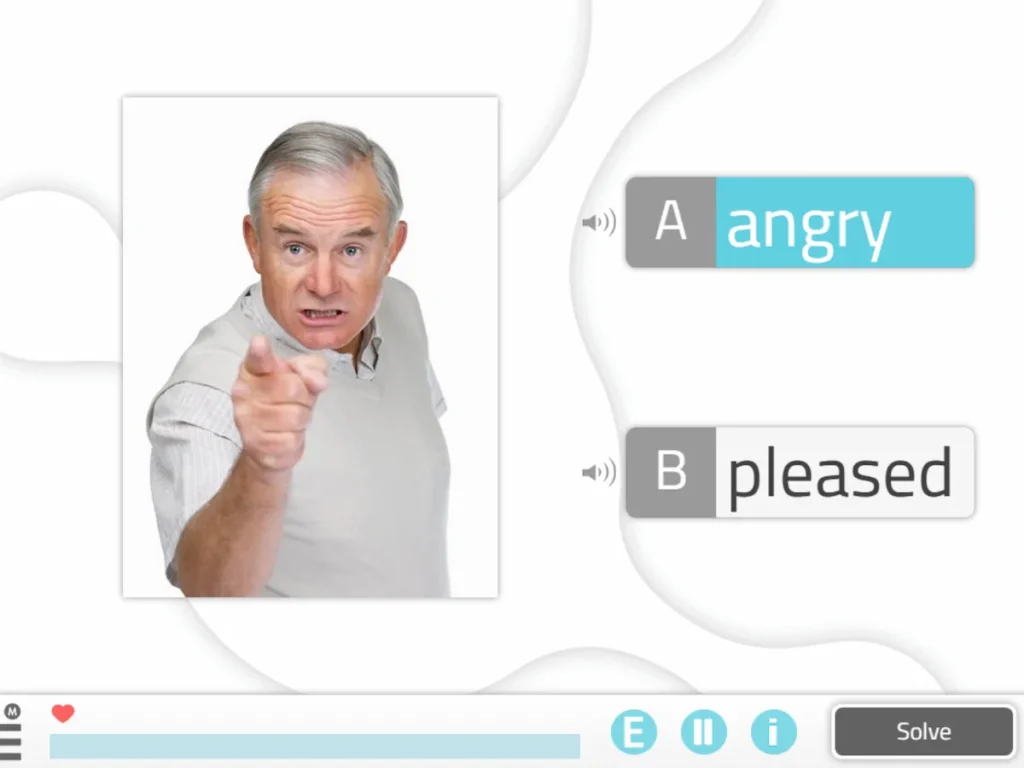
With this cognitive stimulation activity you work on social cognition and reasoning.
2. Inferring Facial Expressions
In this second exercise the user has to choose from several options the one that would correspond to the hidden face shown in the photo.
What expression does the child in the photo have?

Similarly, by doing this exercise the adult will work on two cognitive functions: social cognition and reasoning.
3. Emotional reaction to situations
This activity consists of determining in which situations it is logical to react in the way shown. In this case, the user must identify whether they find it logical that this older person makes that face when they see a stranger listening to their granddaughter’s conversation or when they see their grandson, who is buzzed, combing his hair
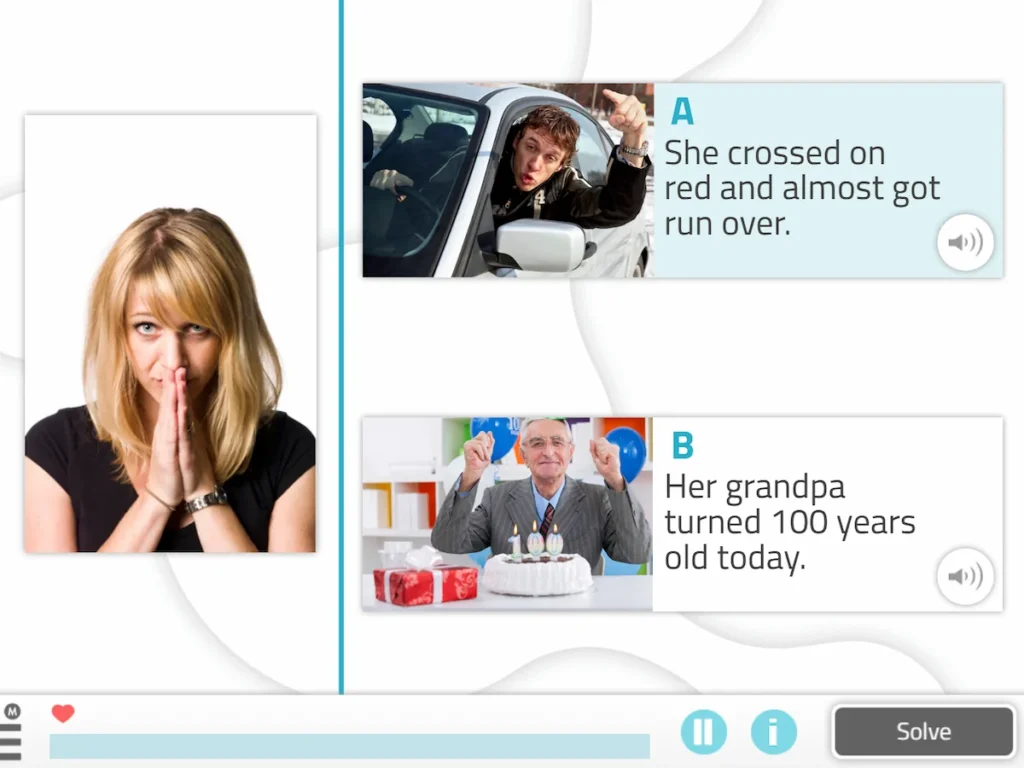
In this case this works on social cognition, vocabulary, and reasoning.
4. Internal States
This activity consists of explaining the Internal States of the characters in the presented stories by creating social scripts.
The man may react differently than what is shown in the photo. The goal is for the adult to think about what the man feels in each case and complete the sentence. It will target social cognition, expression, and reasoning.
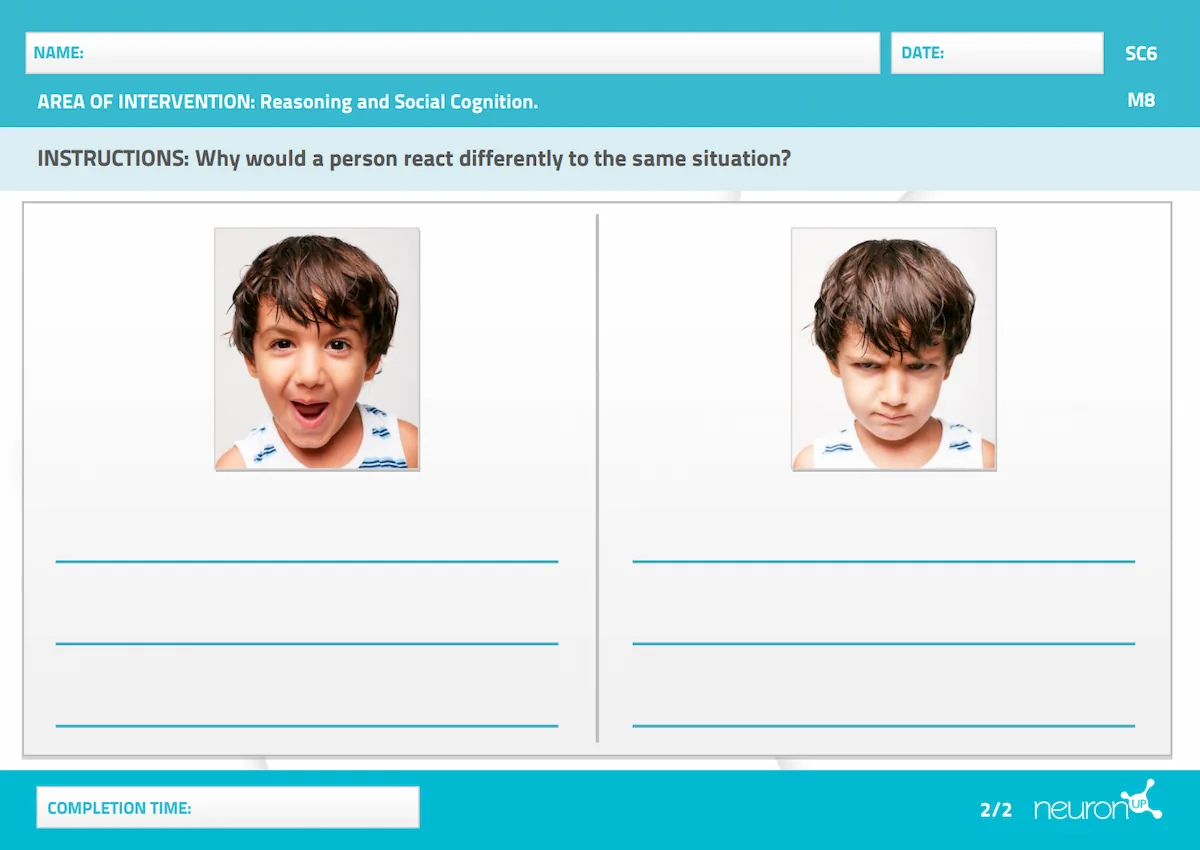
5. Word-Emotion Association
In this activity, the aim is to match the emotions shown with the terms that define them.
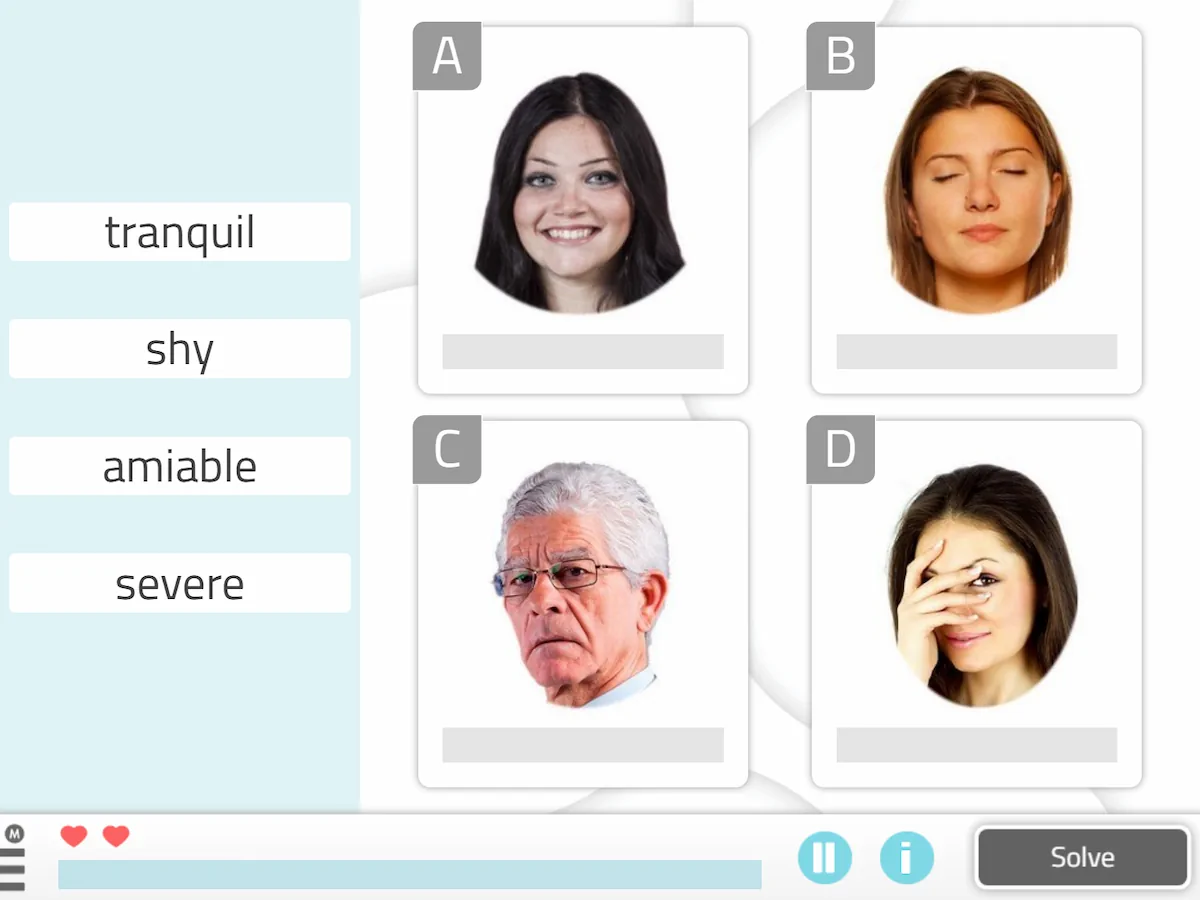
This trains social cognition, reasoning, and vocabulary.
6. Correspondence Emotional Reaction and Situation
In this last activity we propose today, the user must decide and justify whether the emotional reaction shown in the photo is congruent with the situation presented.
For example, in the following photo we see a doctor smiling. This doctor is telling a patient that the operation they are going to perform is risky. The user has to deduce whether the doctor is behaving normally by smiling or, on the contrary, whether it is not appropriate behavior.
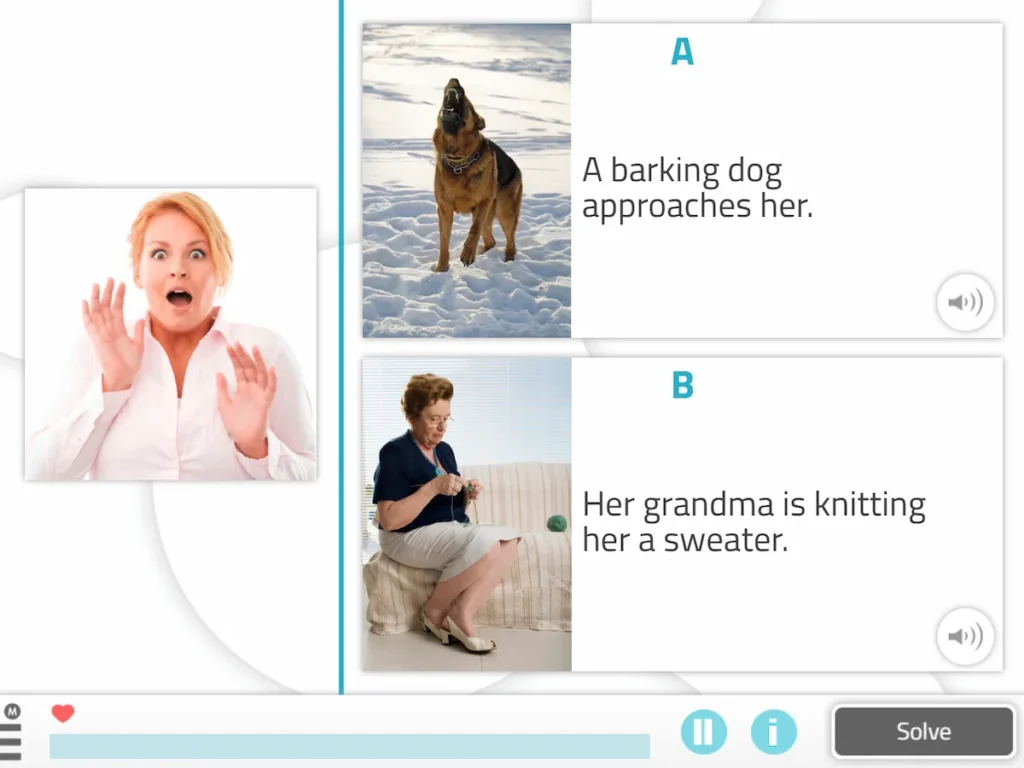
This cognitive stimulation activity works on reasoning and social cognition.
If you liked this post about social cognition, you might be interested in these posts from NeuronUP:
“This article has been translated. Link to the original article in Spanish:”
La cognición social o cómo comprender a las personas: ejercicios de cognición social
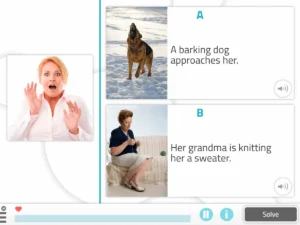


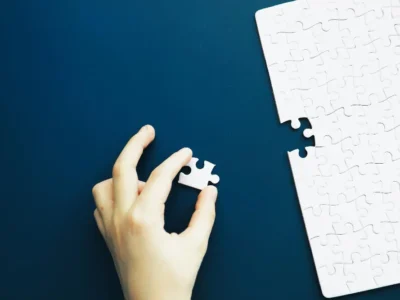

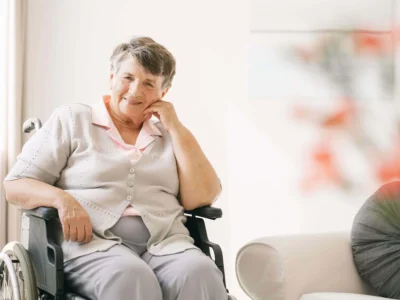
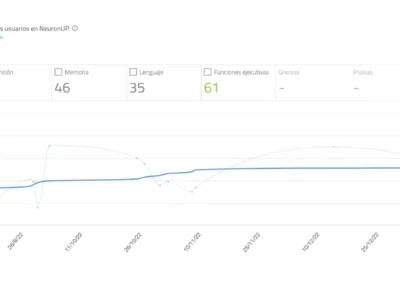
 Five films about neurodegenerative diseases
Five films about neurodegenerative diseases
Leave a Reply